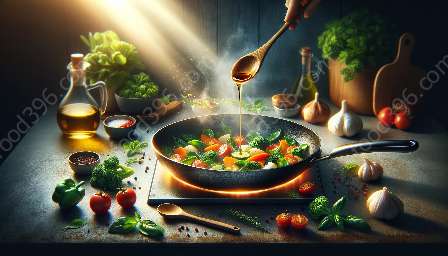When it comes to cooking, the process of browning plays a crucial role in enhancing the flavor and texture of various dishes. From meats and vegetables to sauces and grains, browning can elevate the overall culinary experience. In this comprehensive guide, we will delve into the art of browning, its compatibility with sautéing and other food preparation techniques, and the numerous ways it can be utilized to achieve delicious results.
Browning and Sautéing: A Perfect Pair
One of the most common cooking techniques, sautéing involves cooking food quickly in a small amount of hot oil or fat over high heat. Browning is an essential component of the sautéing process, as it creates a desirable crust or caramelization on the surface of the ingredients, resulting in enhanced flavor and visual appeal.
When sautéing ingredients such as meats, vegetables, or grains, the browning process helps seal in the natural juices and imparts a rich, savory taste. This transformative reaction occurs due to the Maillard reaction, a chemical process that occurs when the surface of the ingredients reaches a certain temperature, leading to the formation of complex flavor compounds.
The Science of Browning
To understand the browning process, it's essential to explore the science behind it. When food is subjected to high heat, the Maillard reaction takes place, causing the proteins and sugars in the food to undergo a series of complex chemical reactions. This reaction results in the formation of unique and delicious compounds that contribute to the desirable flavor, aroma, and color associated with properly browned foods.
Furthermore, the browning process is not limited to meats; it also applies to vegetables, grains, and certain fruits. By lightly caramelizing the natural sugars present in these ingredients, the browning process can enhance their inherent sweetness and develop a depth of flavor that is otherwise unattainable through traditional cooking methods.
Techniques for Achieving Perfect Browning
When it comes to achieving perfect browning, several techniques can be employed to ensure optimal results. For sautéing, it's crucial to use the right type of pan and oil to facilitate even browning and prevent the food from sticking. Additionally, properly controlling the cooking temperature and avoiding overcrowding the pan are essential for achieving consistent browning across the surface of the ingredients.
For meats, ensuring that the surface is sufficiently dry before adding it to the pan can promote better browning. This can be achieved by patting the meat with paper towels to remove excess moisture. Additionally, allowing the pan to preheat adequately and refraining from moving or flipping the meat too frequently during the cooking process can help achieve a desirable crust and seal in the juices, resulting in a juicy and flavorful outcome.
Browning and Food Preparation Techniques
Aside from sautéing, the browning process can be incorporated into various other food preparation techniques to enhance the flavor and texture of dishes. Roasting, grilling, and broiling are all cooking methods that rely on browning to develop a depth of flavor and create appealing visual presentations.
When roasting vegetables, the application of high heat induces caramelization, resulting in sweeter and more complex flavors. Similarly, grilling and broiling meats lead to the formation of flavorful charred edges and grill marks, enhancing the overall taste and texture of the dish.
Conclusion
The art of browning plays a pivotal role in elevating the culinary experience. Whether through sautéing, roasting, grilling, or other cooking techniques, the browning process has the power to transform ordinary ingredients into extraordinary dishes, enhancing their flavor, texture, and visual appeal. Through an understanding of the science behind browning and the utilization of proper techniques, individuals can master this essential culinary skill and create delectable meals that tantalize the senses.

